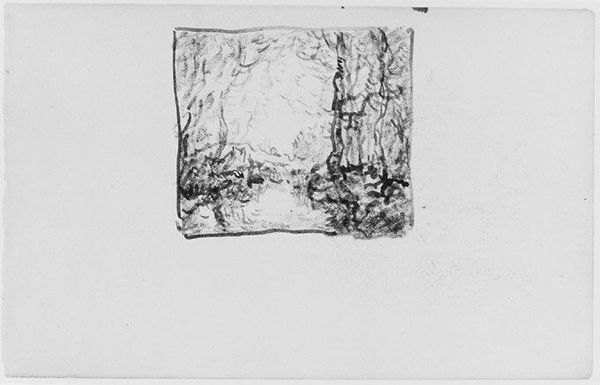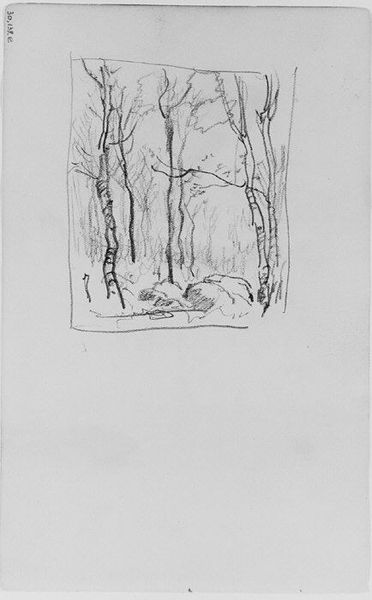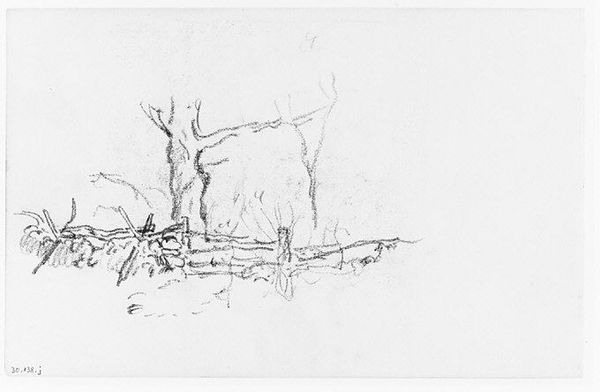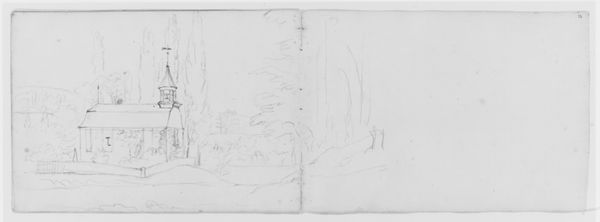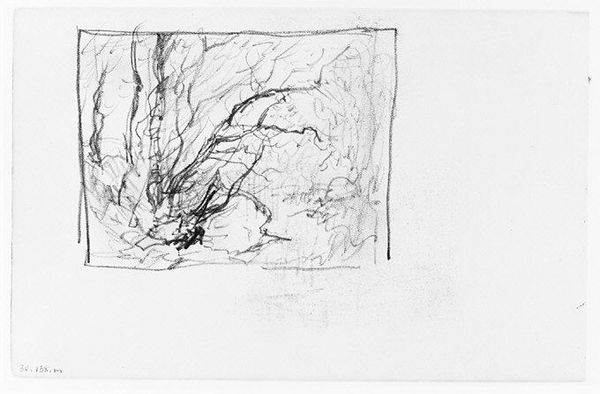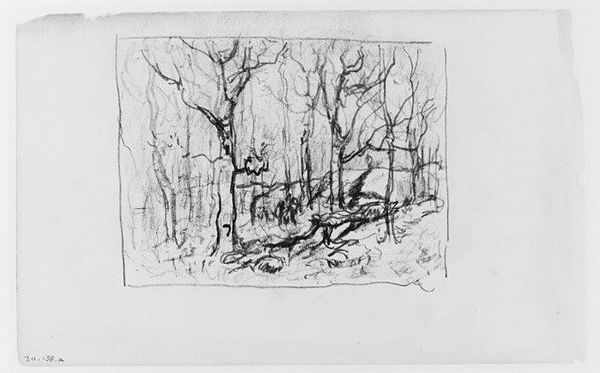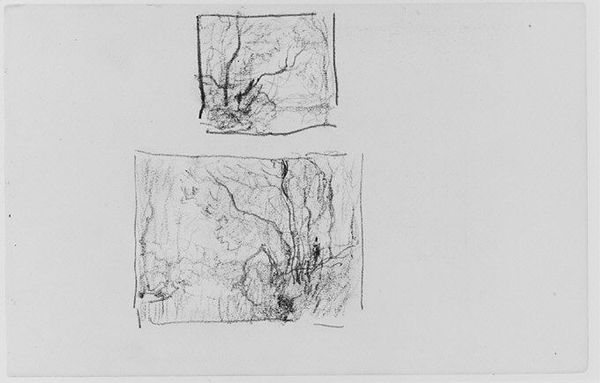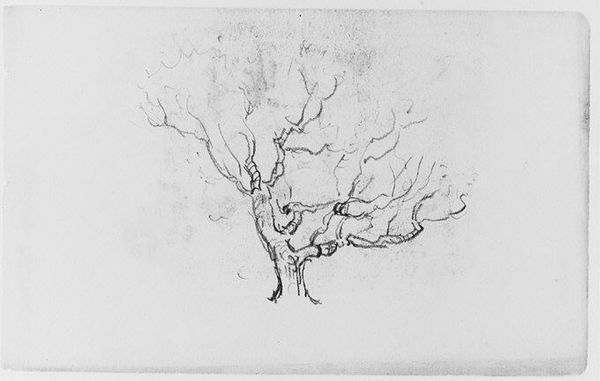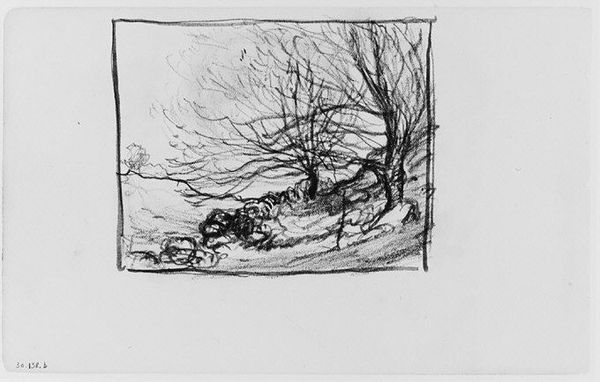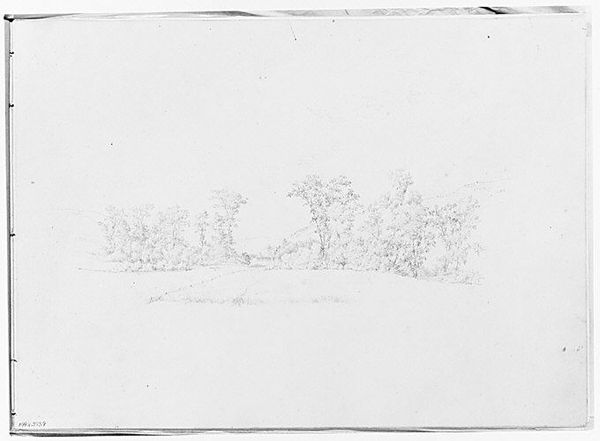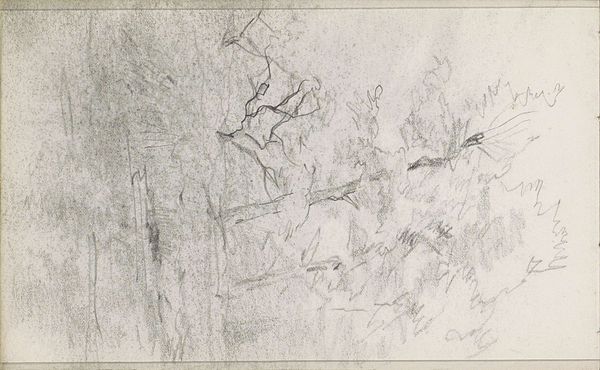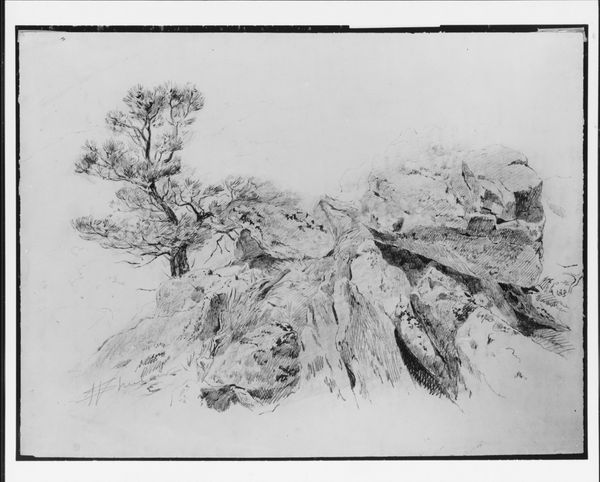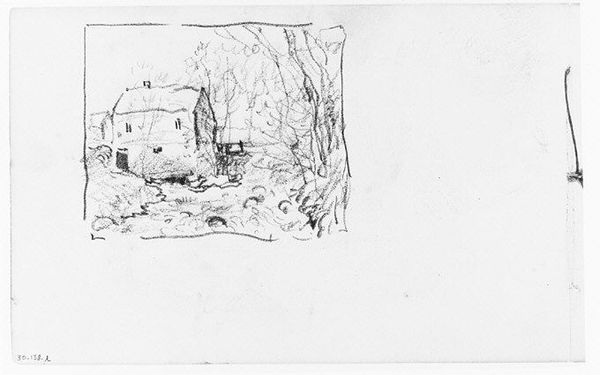
drawing, pencil, graphite
#
drawing
#
organic
#
landscape
#
figuration
#
pencil
#
line
#
graphite
Dimensions: Sheet: 4 7/8 x 7 7/8 in. (12.4 x 20 cm)
Copyright: Public Domain
Curator: What catches my eye first about this work, Henry Ward Ranger’s "Tree Study," likely sketched sometime between 1858 and 1916, is its sense of contained wildness. Editor: I see exactly what you mean. It feels almost like a stage set, doesn't it? A carefully framed glimpse into the raw energy of the woods. What resonates most with me is how the work itself replicates settler/colonial desires: controlling, mastering, dividing through the simple act of a pencil line. Curator: Yes, a stage is a good way of describing the composition. It reminds me a little of Japanese scroll paintings, where you are looking into an imagined space and the white background becomes as important as the object you’re viewing. And there is definitely something to this idea of 'framing nature' through the drawing, fixing it as an aesthetic commodity in a Western representational framework, so in line with what would become American Tonalism. Editor: Absolutely, the "Tree Study" as commodity! Its existence speaks to a commodification of nature, particularly of the wild, where something that cannot truly be held captive—or owned—becomes aestheticized and possessed symbolically. Consider how drawing with graphite literally inscribes one's artistic desires onto the page—transforming a common rock material into the ultimate representation of power. Curator: Exactly! You can just imagine him sitting in a park with his sketchbook and pencils, turning the gritty reality of a tree into something delicate. There is a strange beauty, though, in this translation, a capturing of movement that feels deeply honest. I get the feeling I am observing someone’s most personal, and fleeting, musings, the act of slowing down and attempting to truly perceive and appreciate a natural environment that is often under threat, exploited and neglected. Editor: The exploitation and neglect are ever present in what appears missing here; like an x-ray of extractive colonialist activity across North America: clear cutting and pollution, urbanization's infringement and degradation. This drawing whispers what has been erased, and offers the context from which we should experience it—honoring Indigenous presence and resistance, today! Curator: So much in a simple sketch! Thanks for guiding me there. It makes you think about Ranger’s intentions beyond just capturing a likeness of a group of trees. Editor: Likewise! This glimpse has underscored that no artwork exists outside the interwoven forces that both propel and imperil it.
Comments
No comments
Be the first to comment and join the conversation on the ultimate creative platform.
